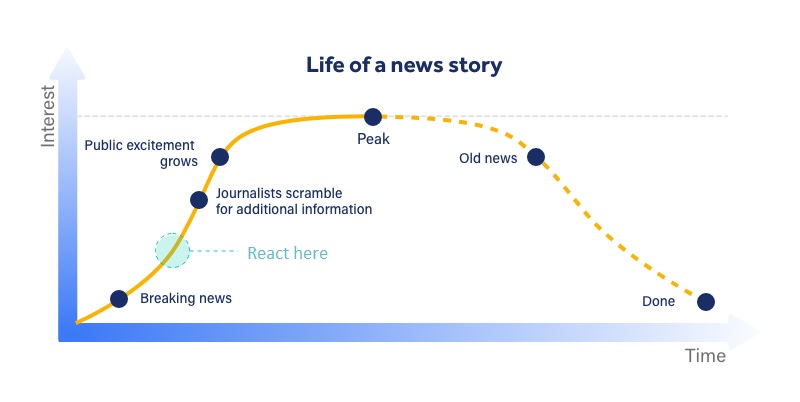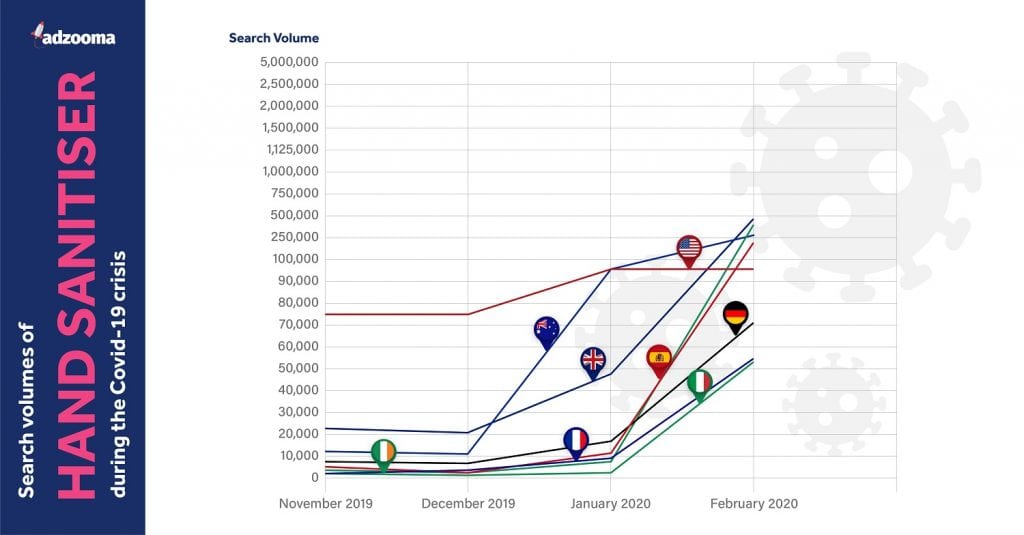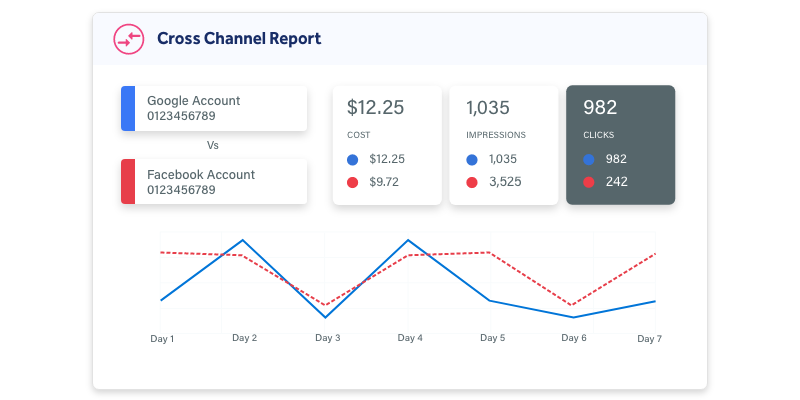Looking to increase traffic to your website? We’ve got you covered with our 7 advanced tips to boost your traffic. These tips won’t just help you increase site traffic but will make sure that you’re bringing in the right traffic. It’s pointless celebrating 1,000 unique visitors if none of them buy your product or interact with your brand.
Let’s get stuck in shall we?
1. Create a PR stunt
PR stunts are planned events designed to catch public attention and promote the organisers of the stunt.
Their goal is to get people talking and once they do, brand awareness will go through the roof – as well as your traffic. Here are some of our top tips for building a successful PR campaign.
Create an original spin
PR stunts need to be original.
If someone’s already done it, it’s not a stunt. It’s just another brand jumping on the bandwagon. Dallas bookstore, The Wild Detectives, is a great example of this. Back in April, they took to Instagram to announce that their bookstore was no more and they would become a travel agency instead – during a global pandemic.

Their new website, gobookatrip, was set up exactly as a travel agency. Except when you type in the destination you want, you’ll instead see books that can help you ‘escape’ there from the comfort of your own home.

Jump on current trends
If something is already popular and talked about, you can tap into that audience by creating a PR stunt tied into it. Sentosa, a tourism-based island in Singapore, is a great example of this.
People can’t physically escape on a holiday. But there has been a virtual alternative that has taken the world by storm – Animal Crossing: New Horizons. The game is the highest-selling game of the series, selling 13.4 million copies since it’s launch on the 20th of March.
For those of you unfamiliar with the game, you start life on a remote island filled with animal residents. There, you take control, spend your island life fishing, catching bugs and crafting furniture to make your island beautiful. I’ve built a private mountain top spa, a full hedge maze, market stall and farm on mine. I’m so proud.
Because people can’t get to Sentosa, Sentosa brought their resort to them. Their team recreated their resort in Animal Crossing, complete with its flower-filled roundabout, boardwalk, Sofitel Singapore Sentosa’s So Spa and iconic restaurants like Mykonos.

Every logo was recreated and furniture styles replicated their real-life counterparts. It took a team of 22 designers 12 days to create this experience, and it’s well worth it.
Make sure PR students are relevant to your brand and tasteful. Being the centre of controversy might bring a lot of clicks to your site, but they’re not likely to increase your conversions.
2. React to real life events
We’re not advocating taking advantage of bad news stories, but reacting to news stories is important. Those stories are at the forefront of your audience’s mind right here right now, therefore creating content which makes you look current and helpful is a win-win for everyone.
It’s all about timing.
News doesn’t stay news forever. There’s a sweet spot to hit, you want to get in early enough to be relevant and before others have found the same angle.
If you go in too late, you’ll just be another voice lost in the crowd.

As well as getting the timing right, successfully reacting depends on:
- Your PR relationships. If you’ve already got strong links to journalists and news outlets, your opinions will be more likely to be featured. If you’re not sure where to start, you may want to hire a PR agency to take care of this for you.
- Picking the right story. Successfully reacting is about finding relevant stories to your business. It’s no use getting in on a breaking news story about a new type of metal being discovered if you sell shoes.
- Your unique angle. When reacting, try and offer an alternative opinion that only you can provide. If you’re going to repeat what everyone else has said, journalists won’t see the point of publishing your quote.
You can’t plan this kind of thing in advance. Instead you need to always keep an eye on current trends, know when to strike and react fast. If done right, it can bring tons of extra traffic to your website through a whole range of channels.
3. Source your own data
Creating your own data pieces is a great way of bringing traffic to your site and increasing the authority of your brand.
It’s a tactic that we use here at Adzooma.
As lockdown hit, I published data showing how the pandemic affected people’s search behaviour across Europe, Australia and the US. If you’re interested, it was a big increase in terms like toilet paper in the UK and thermometers in wider Europe.
This data was then featured and used on other websites, including The Drum. That’s a nice backlink to Adzooma and big traffic boost.

Data sourcing can be as simple as compiling readily available data, such as Google Search Volumes in the above example, or conducting your own research. I’ve done this in my new piece on whether people want to stay at home or not after COVID-19 by surveying hundreds of people.
Generally, the more unique the research, the more potential it has to be shared. If timed right, data pieces can also serve as news pieces to further the buzz around your brand.
4. Co-host a webinar
Webinars are another way to build up brand authority and leadership in a particular subject. Because all you really need is yourself, some time and a camera, they’re relatively inexpensive to make as well.
Pick a topic that’s relevant and interesting to your audience. Provide information that they’ll value and send them to your website for more in-depth resources or tools that they might need.
If you want some more tips on creating webinars, you can download a free guide here.
If you don’t feel ready to host your own, you can co-host a webinar with like-minded businesses or join as a panellist to boost brand awareness.
By getting people to sign up and register, you’ve got yourself a nice little email list ready to use as part of your email marketing. This gives you an extra chance to get those that didn’t attend over to your website.
Webinars are also increasing in popularity, with physical events being cancelled for the foreseeable future. DRINK:// Digital, a monthly digital marketing event based in Nottingham, is one of the latest to take turn their events into a webinar with DRINK:// Digital Shots.
5. Expand your advertising channels
Google and Facebook aren’t the only places that you can advertise on. There are countless alternative PPC advertising platforms that you might want to consider, including Microsoft, Twitter and Capterra.
We’re not recommending that you try and get on every single network out there. Some of them just might not be relevant or profitable for your website. But if you’re hitting a wall with your traffic, it might be time to test new waters.
If you’re going to use multiple channels, you’ll want to check your performance across all platforms with a cross channel report. Access yours for free by creating an Adzooma account.

6. Sharpen your PPC audience targeting
If you’re running PPC campaigns, one way you can increase targeted traffic is to ensure your audience targeting is spot on.
This tactic ensures you’re not only targeting the right audience but also makes sure that you’re getting people at the right stage of the conversion funnel. After all, there’s no use directing a customer to an awareness campaign if they’re already familiar with your brand.
Audience targeting varies on the type of PPC platform that you’re using. For this example, we’ll talk through Google Ads.
There are two types of audience targeting:
- In-market audiences. This includes people who are actively searching for or researching the type of content, product or service that you’re advertising.
- Affinity audiences. These are users that Google has identified as being interested in specific topics, industries or hobbies.
In-market audiences and affinity audiences sound similar, but the difference is mainly time.
In-market audiences look at temporary behaviour and the people who are searching for you right now. In contrast, affinity audiences target people with general interests in your area.
If you’re looking to increase general traffic to your website, using affinity audiences might be the best call to target potential customers who haven’t heard about you yet. However, if you’re looking for people higher up in the sales funnel, in-market audiences will lower your CPA (Cost-Per-Acquisition) as you drive customers towards your website.

Another audience targeting strategy you need to look at is customer match.
Customer match is a way of uploading customer lists in order to target your PPC advertising to these exact people. For example, if you have a list of people who have purchased from you in the past but dropped off your radar, you could set up a PPC campaign to get them back in the funnel and visiting your website once more.
Customer lists need to have at least 1,000 people to be uploaded but can be gathered and combined with earlier strategies like co-hosting a webinar. So, those that have signed up to watch your webinar can then be targeted with ads to view your content.
You can also exclude audiences from your campaign, which is one of the biggest secret weapons for bringing costs down.
This is where you stop certain audiences from seeing your campaigns. It’s helpful so you don’t use your spend on existing customers or people that have already visited your website, so you can focus on new customers.
7. Use programmatic display advertising
I’ve said before and I’ll say it again: AI & automation are the future of PPC. If you aren’t using PPC management software, you’re already years behind.
Programmatic display advertising is an automated way of making real-time display advertising purchases.
It works like this:
- A user visits a website
- A pixel installed on the website notes information about the visit
- The pixel builds a persona based on these visits
- It looks for display advertising slots, based on this audience persona
- When a match is found, it uses real-time bidding to win the advertising slot
- Your advert is played in front of someone who matches your audience

Word of warning: programmatic display advertising can be a little difficult to get right, which means you might expect some hit or miss results if you’re starting out. Used right, it’s a powerful way of bringing targeted traffic your way.
7 tips to success
There you have it, our 7 advanced methods of increasing targeted traffic to your website. Whether you try one or all of these methods, remember to keep monitoring and tracking your results throughout the whole process.
For more tips and insights, sign up to our newsletter or follow us on Twitter.




